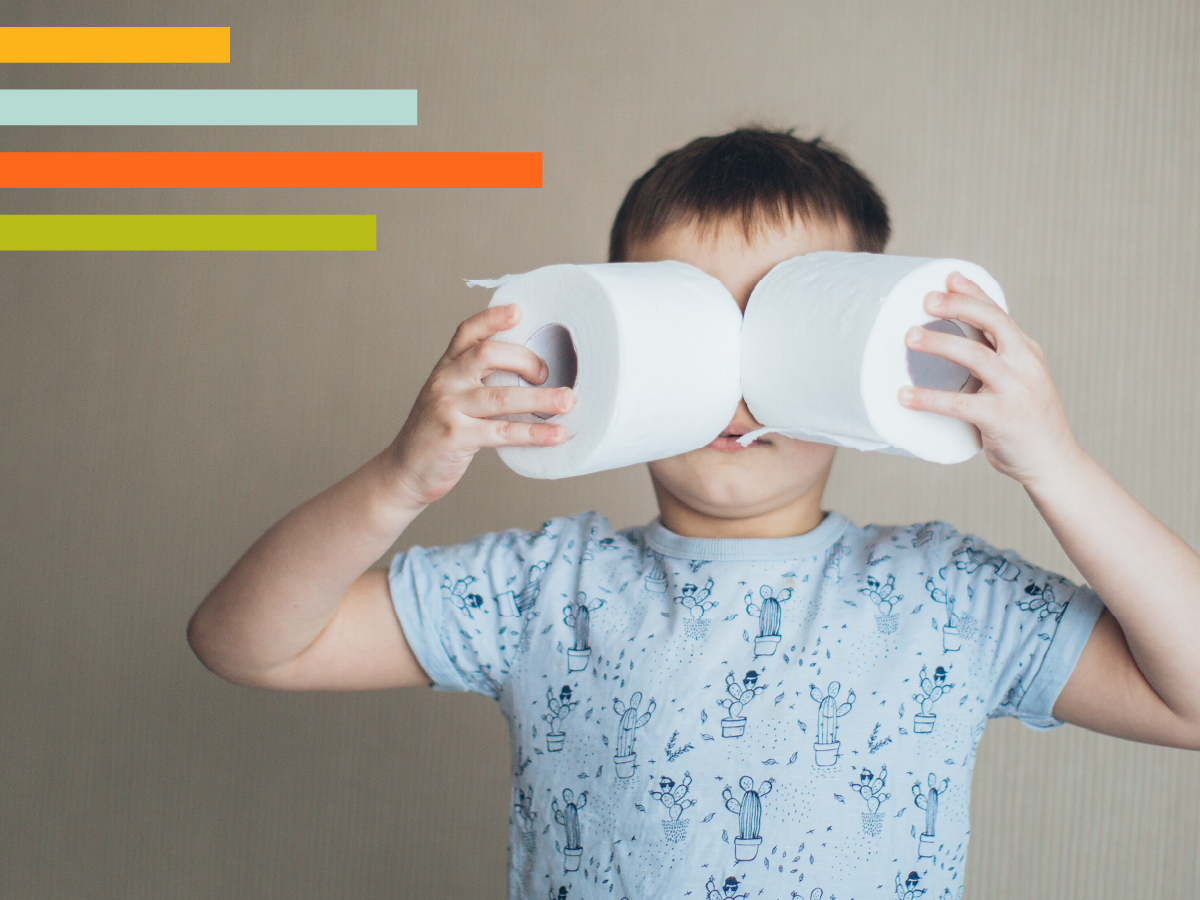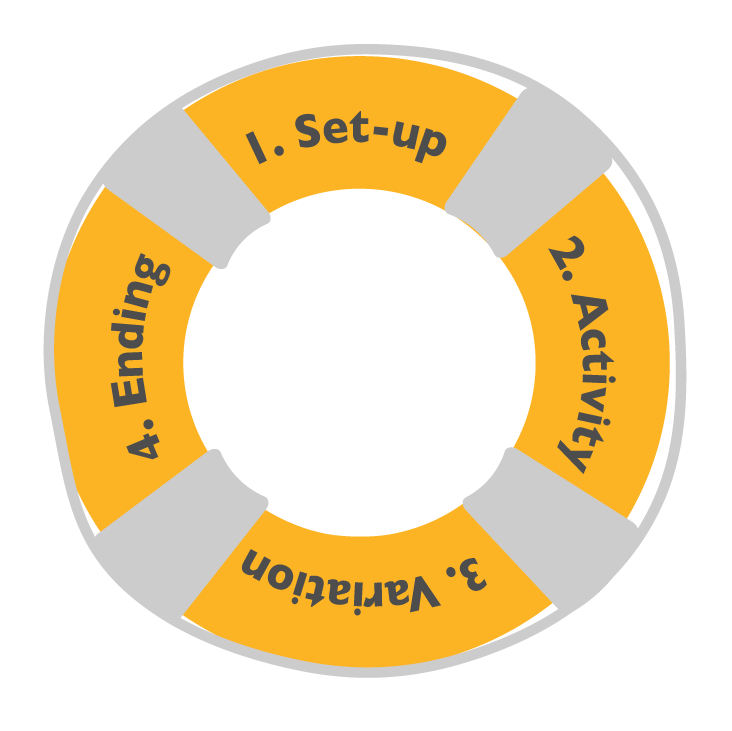
Creating a Toilet Training Routine for Kids
Creating a Toilet Training Routine for Kids

Potty training is a polarizing subject. Contrary to popular opinion, there is no right or wrong age to start potty training and many appropriate ways to introduce this skill. Every child is different, which means your son or daughter’s experience may differ widely from others’.
However, for every child there are two key elements that need to be in place for success: Readiness + Willingness (which apply to both you and your child). Beginning potty training before they are ready and willing leads to counterproductive stress, anxiety, and power struggles.
Readiness
Look for signs that your child has the developmental skills to potty train before jumping in. Signs of readiness include:
- Staying dry for at least a 2-hour period.
- Recognizing that they are urinating or having a bowel movement.
- Being able to follow simple instructions.
- The ability to pull up and down pants and underwear.
- Feeling uncomfortable in a soiled diaper and asking to be changed.
Willingness
If your child is developmentally ready, next they need to be willing. For many parents, a child’s willingness is difficult to recognize — especially because a child may demonstrate initial willingness, experience setbacks, and lose motivation. Emotional factors that impact potty training include a desire for independence and self-mastery, need for control, desire for approval, fears associated with toilet use, and the desire to imitate or conform.
The best way to determine your child’s willingness is to observe how they respond to topics surrounding toileting. For example, if they respond positively to conversations and books about toileting, they are likely motivated. If they resist the idea or cry when the potty is mentioned, you need to work on getting them comfortable talking about and acting out going to the toilet before they’ll be motivated to use it. The more you try to control the process, the more likely you are to get in a power struggle. To avoid this conflict, meet your child where they’re at and focus on motivating them.
In addition to determining if your child is ready and willing, you need to ask yourself if you have the necessary amount of time and patience and if you’re setting your child up for success. It may be best to wait if big changes are happening (you’re moving, traveling, switching from a crib to a bed, about to have another child, etc.), your child is sick, or your family is going through a generally stressful period.
Once you’ve determined your child’s readiness and willingness, you can use our SAVE approach to break the toilet training process down into four practical and approachable steps. In this post, we focus on the early stages of creating a toilet training routine for kids.
Set-up
The first step is the set-up, or opening, of the activity. This is when you first hook your child’s attention and get them motivated to participate. Ideally, the bathroom would be a fun, comfortable place for your child. Here are a few ways to make potty training exciting:
- Read books together. During storytime, read engaging books that will get your child interested in and motivated to go potty. A few of our personal favorites are What is Poop? by Usborne Books and Potty by Leslie Patricelli.
- Give them ownership over the process. Have your child choose items they’ll use in the bathroom. A toilet seat is a must-have. Nothing will deter a child from potty training faster than falling in or thinking they’re going to fall in! Also, a step stool makes them more comfortable and likely to sit longer by extending their reach to the toilet and sink and preventing their legs from dangling. To top it off, have them pick out special soap for washing their hands, fun towels for drying, and other things that lend them a sense of control.
- Have preferred materials and activities available only in the bathroom. Create a basket for items your child only has access to in the bathroom. Novel books, toys, and stickers will help motivate your child to sit on the toilet (and there will be lots of time sitting on the toilet).
- Create a reward system. The more motivated your child is to use the potty, the quicker they will learn to do it. There are many different systems, including sticker charts, treats, and potty prizes. Get creative, and think about what really motivates your child and how you can reward the desired behavior.
Activity
After set-up, it helps to break the act of going to the bathroom down into smaller, teachable steps and introduce them one at a time. Have your child practice with the new bathroom set-up. Start by having them sit on the toilet fully clothed and read a book, listen to a song, or watch their favorite show. Have them flush the toilet for fun and talk about how the water swirls and goes down the toilet. By practicing the steps of toileting, you are familiarizing your child with the process and making it more predictable. Make sure to praise every little success during each step!
Variation
Chances are pretty good that while you’re potty training, you and your child will be spending a great deal of time together in the bathroom. This can be great quality time that you spend together, and varying the activity keeps both of you motivated to continue. You can sing songs, play games, or do puzzles. Here are some ideas that we enjoy:
- Play “I Spy.” You can take turns picking objects in the bathroom that you can see. This is a great way to talk about all the things that have to do with going to the potty, such as toilet paper, soap, and practice turn-taking.
- Try fun apps. There are apps for everything, including potty training apps that teach your child about going to the potty, reward them for going, sing songs about the potty, and allow them to play games while on the toilet. One of our favorites is Daniel Tiger’s Stop & Go Potty.
- Enjoy novel toys. In the set-up, we discussed having materials available only in the bathroom. Change them out regularly so they keep your child motivated and interested.
Ending
The last step when creating a toilet training routine for your child is the ending, or the transition to another activity. Early on, you’ll want to establish a wipe-flush-wash sequence to close down the activity and transition to another. Consistency here is really important.
Toilet Training Routines: What to Remember
Here are some takeaways for creating effective toileting routines with your child:
- Timing is everything. Both you and your child need to be ready. Look for signs like showing an interest in the bathroom or wanting to be changed right after pooping.
- Motivate, don’t force. You can’t make your child ready or willing to potty train, but you can find ways to motivate them. Focus on what you can control and don’t enter into power struggles.
- Make it fun. Make the bathroom a fun place for your child where they only have access to certain toys.
- Patience is a virtue. Have realistic expectations and define success to meet your child where they are at. Success might mean voiding, or, for some kids, sitting on the toilet.
- Consistency is the key. Toddlers thrive on consistency, which helps them practice and feel successful with their new skills.
- Reward every success. Give lots of positive reinforcement, make a big deal about small successes, and be consistent with a reward system.
If this blog on toileting was helpful to you and your family, check out our equally valuable discussion on mealtimes routines.

Sorry, the comment form is closed at this time.